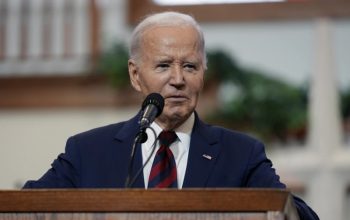news
“Could There a Possible Political Reconfiguration in the Middle East?”, an article by Dr. Leonel Fernández
October 23, 2023
On October 7, at the crack of dawn, Hamas militias – in a cruel and savage manner – attacked several cities and towns in the southern part of Israel. As a result, more than 1,600 Israelis were killed, around 4,000 wounded and nearly 150 civilians and soldiers taken hostage.
The incident has aroused understandable international condemnation, as well as initiative that we support. The attack on young people who were participating in a music festival, on families who were resting in their homes, and against children, women and the elderly has been inhumane and unjustified.
This was the biggest military catastrophe suffered by Israel since its formation as a State in 1948. However, after these fateful events, a big question has arisen: how is it possible that members of the Hamas militia were able to penetrate Israeli territory by land, sea and air, without being detected at any time by the so-called efficient intelligence services and the Israeli armed forces?
This circumstance has caused a lack of trust among the generality of the citizens of Israel towards their civic and military institutions. It has always been considered that the security guarantee of Israeli citizens was due, precisely, to the solid capacity of their national armed forces.
Hamas’ attack on Israel
Faced with this crisis of confidence, Prime Minister Benjamin Netanyahu’s government proceeded to form a national unity government that has managed to put together the installation of a unified war cabinet. This way, Israel has reacted, by adopting as a strategic objective, the physical elimination of the members of the Hamas group. Netanyahu has said that “every member of Hamas must be considered a dead man.”
Limits on Violence
The State of Israel has the right to self-defense in the face of the seriousness of the events that have occurred in its territory. However, in accordance with international treaties and the laws that regulate armed conflicts, there is a limit to the exercise of coercive capacity that Israel can exert over the territory of Gaza, headquarters of the Hamas group.
Hamas’ attack on Israel, faced with this crisis of confidence, Prime Minister Benjamin Netanyahu’s government proceeded to form a national unity government that has allowed the installation of a unified war cabinet. In this way, Israel has reacted by adopting as a strategic objective the physical elimination of the members of the Hamas group. Netanyahu has said that “every member of Hamas must be considered a dead man.”
Limits of violence
The right to defense of the State of Israel is recognized in the face of the gravity of the events that have occurred in its territory. However, according to international treaties and the laws that regulate armed conflicts, there is a limit to the exercise of the coercive capacity that Israel can exercise over the territory of Gaza, the headquarters of the Hamas group.
The Palestinian people have already suffered serious damage. More than 6,000 bombs have been dropped on Gaza, killing nearly 2,000 citizens, including children, women and the elderly. More than 400,000 people have been displaced. The supply of water, electricity, fuel and communication systems have been cut off. The UN Secretary General has called for the exercise of humanitarian law in Palestinian territories, in order to minimize the damage that has been provoked, both to human beings and to the physical infrastructure of the region.
Hamas’ attack on Israeli territory has not received the support of the Palestinian people in general. Since the 1990s, after the Oslo Accords, which gave rise to the Palestinian National Authority – initially under the leadership of Yasser Arafat – and currently of Mahmoud Abbas, efforts have been made to achieve Palestinian national liberation through dialogue and various peace processes.
In addition to the Oslo Accords, there have been initiatives to promote peace and work on the creation of two States: one Palestinian alongside Israel, such as Camp David in 2000; Egypt in 2001; the one identified as a “road map for peace” in 2002; and the Arab Initiative. It is true that these agreements have not achieved the return to the Palestinians of the occupied lands, the return of refugees, or free access to their holy places.
All of this has naturally led to frustrations and bitterness that have left Palestinian communities in a state of helplessness and uncertainty. Due to this situation, a split has occurred over time among the leaders of the main representative organizations of the Palestinian people. Thus, Fatah, which is the main institution within the Palestine Liberation Organization (PLO), has designed a strategy to seek, through dialogue and the search for peace, the achievement of the goal of creating an independent Palestinian State.
For their part, groups such as Hamas, the Palestinian Islamic Jihad, and the Al-Aqsa Martyrs’ Brigade, consider the possibility of a dialogue with Israel to be a utopia, especially since the Abraham Accords, promoted by Donald Trump, which were very biased in favor of Israel.
Thus, after the First Intifada in 1987, which was the fight of stones against tanks, Hamas and other groups have carried out four wars against Israel.
The New Reality
In 2006, Hamas won the legislative elections in Gaza against the Palestinian National Authority. Since then, they have been the legitimate government of the people and, consequently, there is a situation of permanent tension between the Palestinians in Gaza and those who are in the West Bank, under the orders of Mahmoud Abbas.
But something similar, although not on the same scale, is happening in Israel. Today, under the new Netanyahu government, a coalition of far-right groups has been formed, including ultra-Orthodox religious sectors, which support the continuation of settler settlements in the occupied territories. In this context, where there is a predominance, both in Israel and in Gaza, of political sectors that only see confrontation as the solution to the historic dispute between the two peoples, it is understandable how, due to Hamas’ terrorist incursion into Israeli territory, the spark of the prairie has been lit in the worst way imaginable to achieve peace in this volatile region of the Middle East.
Israel’s angry reaction to the Gaza Strip has already led the Hezbollah group, which operates from southern Lebanon, to have its first clash with Israeli military forces.
In addition, Iran has not hidden its cooperation with Hamas militias for their attack on Israel; Qatar has been financing its operations; and Turkey has called for restricting the use of Israeli force.
The United States, for its part, has moved its naval fleet towards the conflict zone, which signals the American return to the Middle East and, consequently, the redesign of a new geopolitical reality which, together with the war between Russia and Ukraine, and its rivalry against China, appears turbulent and unpredictable.





